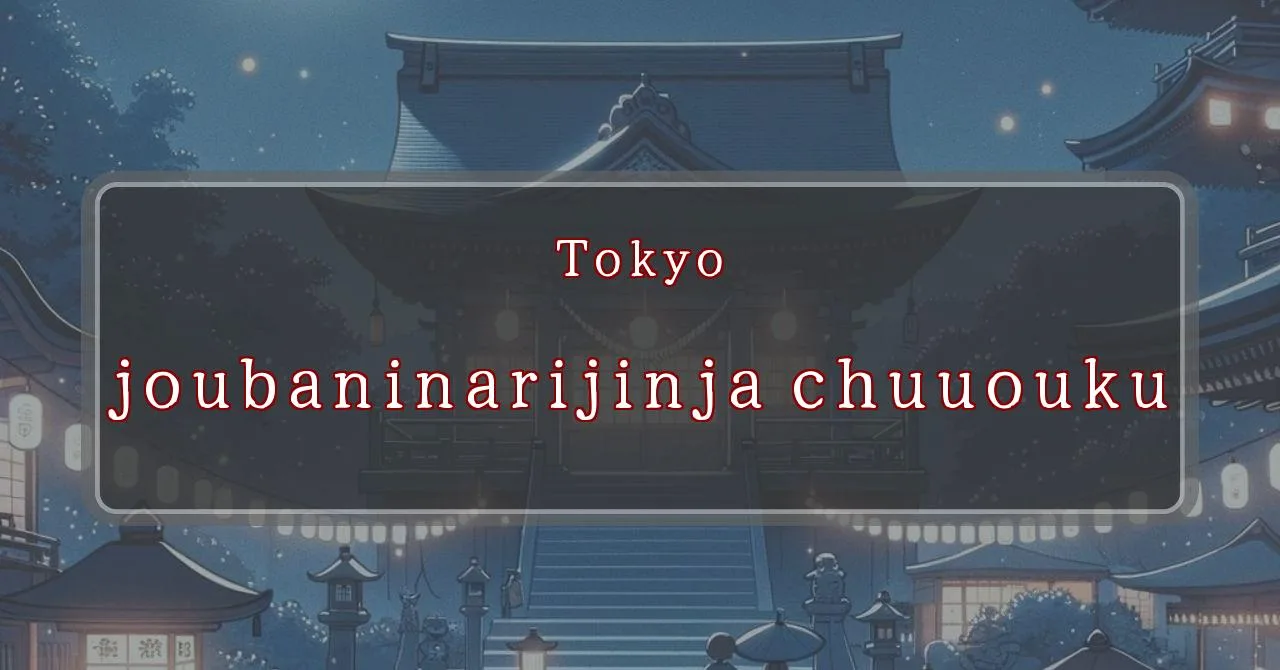Autumn festival of lights and deities
Basic Information
Tokiwa Inari Shrine is a Shinto shrine located in Nihonbashi-honcho, Chuo-ku, Tokyo, Japan.
- Address: 1-8-11 Nihonbashi-honcho, Chuo-ku, Tokyo 103-0023, Japan
- Phone Number: Not publicly available
- Access: 6-minute walk from Mitsukoshimae Station on the Tokyo Metro Ginza and Hanzomon Lines
- Festival Days: October 17, 2024
Main Events and Attractions of the Festival
The Tokiwa Inari Shrine Festival is held annually on October 17th. The festival features a variety of events and attractions, including:
Mikoshi Procession
The mikoshi procession is the main event of the festival. A mikoshi is a portable shrine that is carried through the streets by a group of people. The mikoshi of Tokiwa Inari Shrine is carried from the shrine to the nearby Nihonbashi Bridge and back again. The procession is accompanied by music and dancing, and it is a lively and colorful sight.
Lion Dance
The lion dance is another popular attraction at the Tokiwa Inari Shrine Festival. The dance is performed by two people, one wearing a lion head and the other wearing a lion body. The lion dance is said to bring good luck and fortune, and it is a popular attraction for both children and adults.
Gagaku Performance
Gagaku is a traditional Japanese musical genre that is often performed at Shinto festivals. The gagaku performance at the Tokiwa Inari Shrine Festival is a special opportunity to experience this unique and beautiful music.
Benefits and Deities
Tokiwa Inari Shrine is dedicated to Inari, the god of rice and prosperity. Inari is one of the most popular deities in Japan, and he is often worshipped by businesses and individuals who are seeking success and prosperity.
History and Origin
Tokiwa Inari Shrine was founded in 1457 by Ota Dokan, a samurai who was responsible for building Edo Castle. The shrine was originally located within Edo Castle, but it was moved to its current location in 1603. The shrine has been rebuilt several times over the years, and the current buildings date from the 19th century.
Tips and注意事項 for Visitors
If you are planning to visit the Tokiwa Inari Shrine Festival, here are a few tips and注意事項:
- The festival is very popular, so it is important to arrive early to avoid the crowds.
- Wear comfortable shoes, as you will be doing a lot of walking.
- Bring a camera to capture the sights and sounds of the festival.
- Be respectful of the shrine and its customs.
Blessings and Deities
Tokiwa Inari Shrine is dedicated to Inari, the god of rice and prosperity. Inari is one of the most popular deities in Japan, and he is often worshipped by businesses and individuals who are seeking success and prosperity. Inari is also associated with fertility, agriculture, and foxes.
Origin and History
Tokiwa Inari Shrine was founded in 1457 by Ota Dokan, a samurai who was responsible for building Edo Castle. The shrine was originally located within Edo Castle, but it was moved to its current location in 1603. The shrine has been rebuilt several times over the years, and the current buildings date from the 19th century.
Tips and Notes for Visitors
If you are planning to visit Tokiwa Inari Shrine, here are a few tips and notes:
- The shrine is open daily from 9:00 AM to 5:00 PM.
- Admission is free.
- There is a small parking lot available for visitors.
- The shrine is a popular tourist destination, so it is best to visit during the off-season (November-February) to avoid the crowds.
- Photography is permitted within the shrine grounds.
Parking Information
There is a small parking lot available for visitors to Tokiwa Inari Shrine. The parking lot is located on the north side of the shrine, and it can accommodate approximately 20 cars. The parking fee is 200 yen per hour.
Popular Stalls and Food Carts in Recent Years
| Type of Stall | Description |
|---|---|
| Takoyaki | A staple at Japanese festivals. Characterized by a crispy outside and a creamy inside. |
| Jaga Butter | A simple yet popular snack of hot potatoes lavishly topped with melted butter. |
| Baby Castella | Small castella cakes, sweet and fluffy treats enjoyed by children and adults alike. |
| Grilled Ayu with Salt | Fresh ayu fish grilled whole with salt, a savory taste of Japanese summer. |
| Shaapin | A unique gourmet item influenced by foreign cuisine, with a chewy skin wrapping the filling. |
| Okonomiyaki | A Japanese grilled dish where you often choose your own ingredients for a personalized flavor. |
| Cotton Candy | A fluffy, sweet snack that’s extremely popular with children. |
| Chocolate Banana | A banana coated in chocolate, a fun and visually appealing dessert. |
| Kushiyaki | Various types of ingredients skewered and grilled, an easy-to-enjoy snack. |
| Yakisoba | Fried noodles mixed with a special sauce, a fast food favorite in Japan. |



